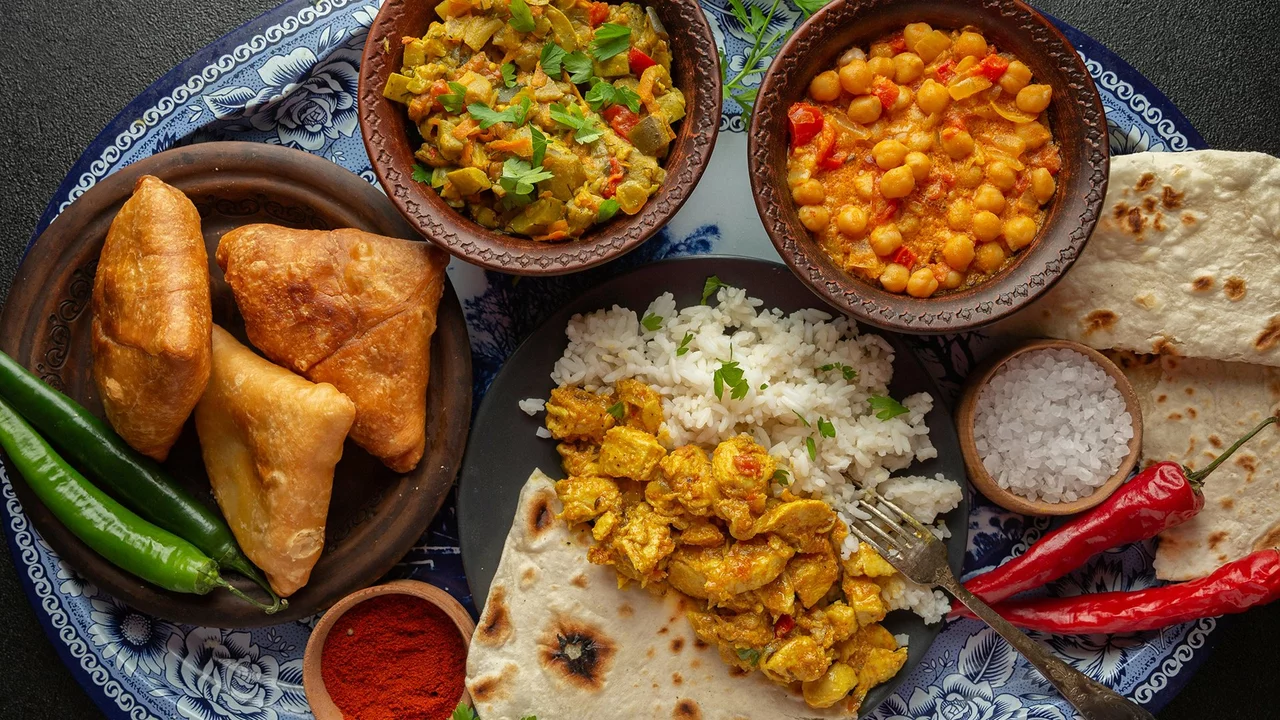The Fusion and Confusion: The British Invasion on Indian Palate
Before we dive headfirst into the melting pot, let me whisk you back in time to pre-colonial India. A time when spicy, aromatic dishes were the order of the day and people thought "tea" was what the English did when they weren't sure how to pronounce "the". Indian cooking was a riot of flavours - fiery red chilli, tangy tamarind, creamy coconut, toothsome mustard seeds, and an array of other delights seldom tasted in the Old World. But all this changed with the advent of the British, who sailed across seas and set foot on Indian shores, carrying not only the seeds of political imperialism but also culinary colonialism.
Imagine the British, timid and investigative, plopped in the middle of a feisty curry banquet. With unwieldy cutlery, they navigated their way around the unfamiliar terrain comprising of spicy gravies, crunchy papads and fragrant biryanis. Overwhelmed, perplexed, but not entirely put-off. You see, they felt the allure of our cuisine, and this marked the inception of a culinary courtship that was to mould Indian food as we know it today.
Raiders of the Lost Spice: Tweaking Indian Flavours
Now for all those foodies out there who think these British were here on a mere Spice Odyssey, think again. Their influence wasn't just about taking Indian spices back home. No, no, they wanted to have their scones and eat our biryani too. And while trying to do that, they ended up significantly reshaping Indian cuisine. It's almost like they invented a culinary version of colonial hangover, but let's not make that a hashtag.
One of the defining instances was the creation of the Anglo-Indian cuisine. Now, don't be misled by the name. Anglo-Indian wasn't just about John from Manchester trying to survive on vindaloo. It was a brave experiment where traditional Indian food was liberally sprinkled with a British touch. Indian spices were adjusted, meat switched, and dishes 'crowned' with names her majesty would approve.
The Queens of the Kitchen: Curry, Chutney, and the Clandestine Tea
The first culprit in this culinary saga has to be Curry. Ever wondered how a word as foreign as Curry came to represent quintessential Indian cuisine? Trace the breadcrumbs back to the colonial era. 'Curry' was the British shorthand for any spiced, saucy Indian dish they could slurp generously with rice. This then led to the creation of Curry Powder - a much-mellowed version of the riotous Indian spice mix.
Next comes Chutney - the sweet, tangy, or spicy relish that the Western world loves to scoop generously onto their sandwiches, meats, and sometimes directly onto their tongues (I've seen it in movies). The original Indian chutney is a far spicy cousin, more aggressive, with the fresh and zingy flavours of green chilli and tamarind. However, thanks to the British, we now have sweet variants like mango chutney (which, by the way, don't call 'chutney' in front of a purist Indian, you've been warned).
And now, let's spill the tea. Before the British arrived, Indians consumed tea as herbal medicine. It was the Brits who transformed our functional tea into the recreational and addictive 'chai', thanks to their tireless efforts in establishing tea plantations. In a way, they planted more than just tea; they planted a national obsession.
From Milder Mulligatawny to Tangy Tikka Masala: Subverting the Spice Scale
Moving onto main course, the British penchant for milder tastes led to the birth of dishes like Mulligatawny Soup - a toned-down version of the spicy Tamil rasam. In a similar vein, Kedgeree was a British spin on the traditional 'khichdi', with the addition of flaked fish and boiled eggs.
However, the crowning glory in this culinary teeter-totter has to be Chicken Tikka Masala, a dish so British that it's practically gone and asked the Queen for a knighthood. Nothing quite embodies the marriage between Indian flavours and British inclinations like this tangy, creamy curry (yes, there's that word again).
Decades on, I must concede it's this juggling of jalfrezis and jam tarts that has led to an incredible fusion. In this tandoori meets toad-in-the-hole romance, these two culinary worlds have found a delicious harmony, creating a feast that is as diverse as it is delectable. So, the next time you're licking curry off your fingers (like a true Indian) remember, it was the British who got us all 'curried' away. Cheers to that spicy rendezvous!
